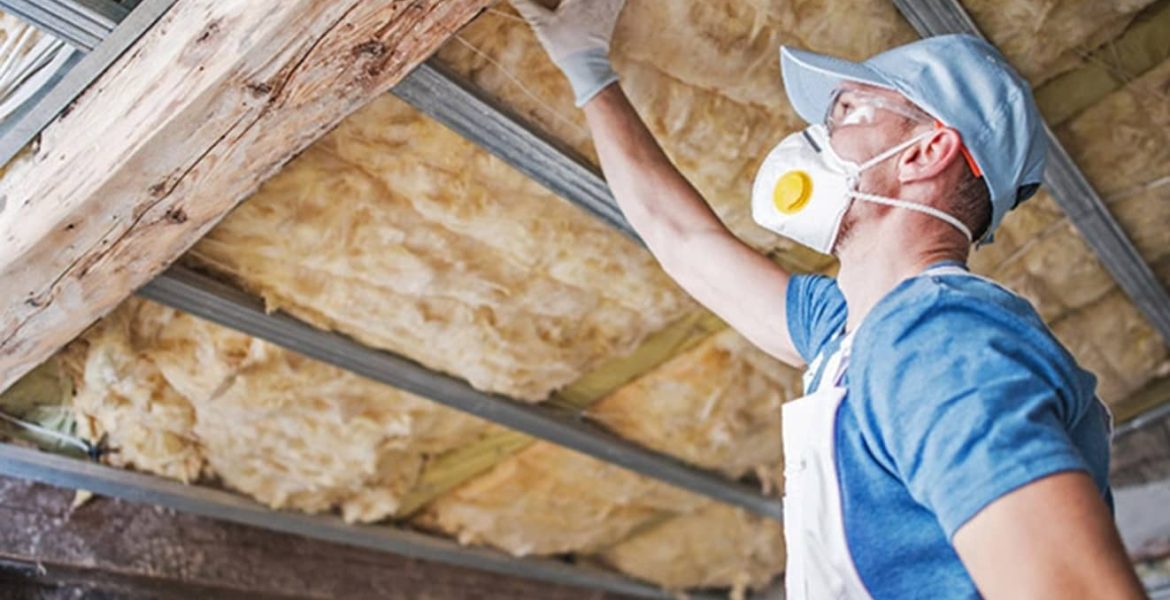Attic rain occurs when warm, moist air condenses in the attic during cold Canadian winters, leading to water damage and mold growth. Common causes include poor ventilation, high indoor humidity, and temperature fluctuations. Addressing attic rain requires proper insulation, ventilation, and humidity control. By implementing effective solutions like improving airflow and consulting professionals, homeowners can prevent costly damage and protect their homes from long-term issues caused by attic rain.
Table of Contents
- Common Causes of Attic Rain in Canadian Homes
- Potential Damage Caused by Attic Rain
- Effective Solutions to Prevent and Address Attic Rain
- Final Thoughts: Protecting Your Home from Attic Rain
During the cold winter months in Canada, many homeowners face an unexpected and often hidden issue: attic rain. This phenomenon occurs when warm, moist air from inside the home rises into the attic, where it condenses on cold surfaces, leading to water droplets that can cause significant damage. From water stains to mold growth, attic rain poses a serious threat to both the structural integrity of your home and indoor air quality.
To address this problem effectively, homeowners need practical strategies, such as improving attic ventilation, reducing indoor humidity, and exploring attic rain solutions that prevent moisture buildup. By taking proactive steps, you can protect your home from costly repairs and create a safer, more comfortable living environment for you and your family.
Common Causes of Attic Rain in Canadian Homes
Understanding the root causes of attic rain is essential for preventing and addressing this issue effectively. In Canadian homes, several factors contribute to the formation of attic rain, particularly during the colder months. Below are the most common causes:
Poor Attic Ventilation
Proper airflow is critical to maintaining a balanced temperature and humidity level in the attic:
- Blocked or inadequate vents prevent moist air from escaping, leading to condensation.
- Insufficient soffit or ridge venting traps warm air near the roof, exacerbating moisture buildup.
- Modern homes with tightly sealed envelopes may lack natural ventilation, making them more prone to attic rain.
Improving ventilation systems can significantly reduce the risk of condensation and water damage.
High Indoor Humidity Levels
Excessive indoor humidity is a major contributor to attic rain, especially in winter:
- Everyday activities like cooking, showering, and drying clothes release moisture into the air.
- Humidifiers, if overused, can raise humidity levels beyond the recommended 30–50% range.
- Without proper exhaust fans or dehumidifiers, this moisture migrates to the attic.
Controlling indoor humidity is a key step in preventing attic rain.
Temperature Fluctuations Between Indoors and Outdoors
The stark contrast between warm indoor air and cold outdoor temperatures creates ideal conditions for condensation:
- Warm air rises and cools rapidly upon reaching the cold attic surfaces.
- This cooling causes the moisture in the air to condense, forming droplets that accumulate on surfaces.
- Frequent temperature swings, common in Canadian winters, intensify this process.
Insulating and sealing the attic can help mitigate these effects by reducing heat transfer.
Inadequate Attic Insulation
Insufficient or improperly installed insulation allows heat to escape into the attic:
- Gaps or compressed insulation fail to block warm air from rising into the attic.
- Heat escaping into the attic warms the roof surface, increasing the likelihood of snowmelt and subsequent refreezing.
- This cycle contributes to ice dams and additional moisture issues.
Upgrading insulation ensures that warmth stays within the living space, minimizing condensation risks. By addressing these common causes, homeowners can take meaningful steps toward preventing attic rain and protecting their homes from its damaging effects. These insights set the stage for understanding the potential consequences of unchecked attic rain, explored in the next section.
Read more:
7 Smart Hacks to Make Your Home Fit Your Lifestyle
Why the Details in Your Home Matter More Than You Think
The Ultimate Family Guide to Stress-Free Home Transitions
Potential Damage Caused by Attic Rain
Attic rain, if left unaddressed, can lead to a range of costly and hazardous consequences for Canadian homes. The accumulation of moisture in the attic not only compromises the structural integrity of the house but also poses health risks to its occupants. Below are the most significant types of damage caused by attic rain:
Water Stains and Ceiling Damage
One of the earliest visible signs of attic rain is water stains on ceilings and walls:
- Persistent moisture seeps into drywall, causing unsightly discoloration and bubbling.
- Over time, saturated drywall may weaken and collapse, requiring expensive repairs.
- These stains often indicate ongoing moisture issues that need immediate attention.
Addressing water stains early can prevent further deterioration of interior surfaces.
Mold Growth and Health Risks
Moist environments are breeding grounds for mold, which can spread quickly in attics:
- Mold spores released into the air can trigger allergies, respiratory issues, and other health problems.
- Hidden mold growth behind walls or insulation may go unnoticed until it becomes severe.
- Remediation can be costly and time-consuming, especially if the infestation is widespread.
Preventing mold through proper attic moisture control is far more effective than dealing with its aftermath.
Structural Damage to Roof and Framing
Prolonged exposure to moisture can compromise the structural components of your home:
- Wooden roof trusses and framing may rot or warp, reducing their load-bearing capacity.
- Metal fasteners and nails can rust, further weakening the structure.
- Over time, these issues may lead to sagging roofs or even catastrophic failures.
Repairing structural damage is both expensive and invasive, making prevention critical.
Reduced Energy Efficiency
Attic rain can also impact your home’s energy performance, leading to higher utility bills:
- Wet insulation loses its effectiveness, allowing heat to escape more easily.
- Increased heating costs during winter months strain both your budget and your HVAC system.
- Addressing insulation issues caused by moisture can restore energy efficiency and comfort.
By mitigating attic rain, homeowners can maintain a well-insulated and energy-efficient home.
Long-Term Property Value Impact
Unchecked attic rain can diminish the value of your property:
- Buyers may be deterred by visible damage, mold issues, or a history of moisture problems.
- Homes with unresolved attic rain are often flagged during inspections, complicating sales.
- Proactive maintenance and repairs help preserve your home’s marketability and value.
Understanding the potential damage caused by attic rain underscores the importance of preventative measures. By addressing the root causes, homeowners can avoid these costly and hazardous outcomes.
Effective Solutions to Prevent and Address Attic Rain
Preventing and addressing attic rain requires a combination of proactive measures and practical solutions. By targeting the root causes – poor ventilation, high humidity, and inadequate insulation – homeowners can significantly reduce the risk of moisture buildup in their attics. Below are effective strategies to tackle this issue:
1. Improve Attic Ventilation
Proper ventilation is one of the most critical steps in preventing attic rain:
- Install or upgrade soffit vents, ridge vents, or gable vents to promote consistent airflow.
- Make sure vents are unobstructed by debris, insulation, or other blockages.
- Consider installing a mechanical ventilation system, such as an attic fan, to enhance air circulation.
Balanced airflow helps expel moist air before it condenses, reducing the risk of water accumulation.
2. Control Indoor Humidity Levels
Managing indoor humidity is essential to minimize the amount of moisture entering the attic:
- Use exhaust fans in kitchens, bathrooms, and laundry areas to vent moist air outside.
- Avoid overusing humidifiers, especially during winter months when attic rain is more common.
- Invest in a whole-home dehumidifier to maintain optimal humidity levels (30–50%).
By controlling humidity at its source, you can prevent warm, moist air from rising into the attic.
3. Upgrade Attic Insulation
Proper insulation prevents heat from escaping into the attic, reducing the risk of condensation:
- Use high-quality insulation materials like spray foam or fiberglass batts to seal gaps and prevent heat transfer.
- Make sure insulation is evenly distributed and does not block ventilation pathways.
- Consider adding a radiant barrier to reflect heat back into the living space.
Well-installed insulation keeps warmth where it belongs, minimizing temperature fluctuations in the attic.
4. Seal Air Leaks and Bypasses
Air leaks allow warm, moist air to escape into the attic, contributing to condensation:
- Inspect and seal gaps around light fixtures, plumbing stacks, chimneys, and attic hatches using caulk or foam sealant.
- Pay special attention to areas where walls meet the ceiling, as these are common bypass points.
- Conduct a home energy audit to identify hidden leaks that may need professional attention.
Sealing these gaps reduces the volume of warm air entering the attic, addressing a key cause of attic rain.
5. Regular Maintenance and Monitoring
Ongoing care secures that your attic remains dry and damage-free:
- Inspect your attic periodically for signs of moisture, mold, or water stains.
- Clear gutters and downspouts to prevent ice dams and water backup.
- Schedule annual HVAC and ventilation system check-ups to ensure they’re functioning properly.
By implementing these strategies, you can protect your home from the damaging effects of attic rain while maintaining a safe and comfortable living environment. These preventative measures set the stage for long-term peace of mind, explored further in the conclusion.
Final Thoughts: Protecting Your Home from Attic Rain
By understanding causes of attic rain – such as poor ventilation, high humidity, and inadequate insulation – homeowners can take proactive steps to prevent moisture buildup in their attics. Implementing effective solutions like improving airflow, controlling indoor humidity, and upgrading insulation not only protects your home’s structural integrity but also enhances energy efficiency and indoor air quality.
Addressing attic rain is not just about solving a problem – it’s about protecting your investment and creating a healthier space for you and your family. With the right strategies in place, you can keep your home dry, durable, and free from the hidden dangers of attic rain.

